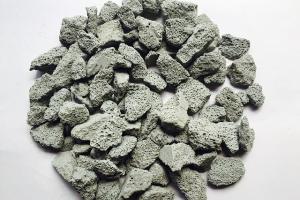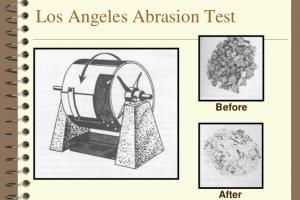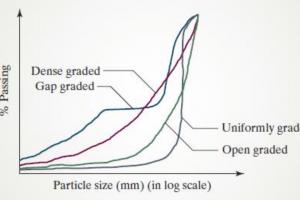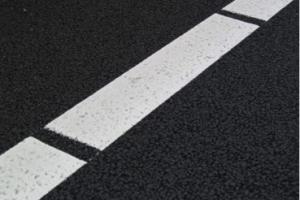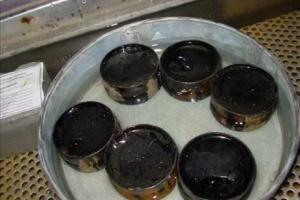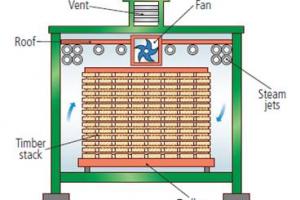Types of Paints based on Different Characteristics
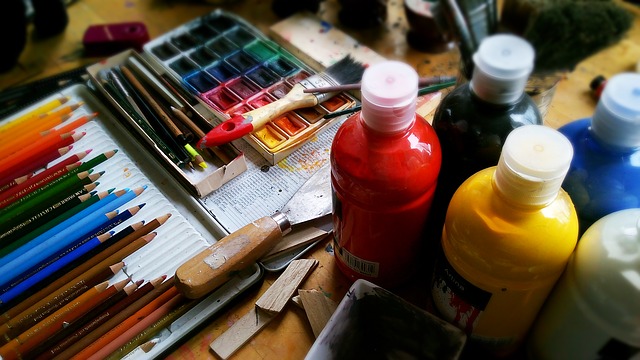
Paints can be classified into different types on the basis of:
- Their Function
- Binder or Medium
- Pigment Used
- Sheen
- Appearance
Based on Their Function
a. Primers or Undercoats
A preparatory coating is applied before painting for better adhesion.
- Primers or undercoats serve as a preparatory layer before applying the finishing coats. They have several functions, including:
- Adhesion: They help paint adhere to the surface by providing a bonding layer.
- Sealing: Primers seal porous surfaces, preventing them from absorbing too much paint.
- Blocking Stains: Some primers are designed to block stains, such as water, smoke, or oil stains, from bleeding through the topcoat.
- Enhancing Durability: They enhance the durability and longevity of the paint job.
- Smoothing Surfaces: Certain primers can smooth out rough or uneven surfaces.
- Common Uses: Primers are typically used on a variety of surfaces, including wood, metal, drywall, and masonry, before applying the final coats of paint.
b. Finishing Coats
Polish to create a smooth and shiny surface.
- Finishing coats are the top layers of paint that provide color, aesthetics, and protection to surfaces. Their functions include:
- Decorative Finish: They provide the desired color and appearance for a surface.
- Protection: Finishing coats protect surfaces from environmental factors like UV rays, moisture, and abrasion.
- Enhancing Durability: They add a layer of durability, ensuring that the surface can withstand wear and tear.
- Easy Maintenance: High-quality finishing coats are often easy to clean and maintain.
- Common Uses: These paints are used in various applications, including interior and exterior walls, furniture, trim, and decorative elements.
c. Sanding Sealer
Sanding sealer fills small pits and pores. It is usually applied on wooden surfaces to achieve a smoother surface.
- Sanding sealers are used to prepare surfaces for finishing coats. Their functions include:
- Sealing and Smoothing: Sanding sealers fill in pores and smooth out surfaces, ensuring the final coats of paint or varnish adhere evenly.
- Reducing Grain Raise: Particularly used on wood, sanding sealers reduce grain raise, preventing the wood fibers from standing up when the final coat is applied.
- Time Efficiency: They save time by reducing the number of coats needed for a smooth finish.
- Common Uses: Sanding sealers are primarily used on wood surfaces before applying clear finishes like varnish or lacquer.
d. Floor Paint
Long-lasting paints are used to provide good and hard surface finish for concrete or other rough floors, e.g. Urethane Oil-Based Paint.
- Floor paints are designed to withstand the heavy wear and tear that floors typically endure. Their functions include:
- Durability: Floor paints are formulated to be highly durable, resisting foot traffic, abrasion, and sometimes even vehicular traffic.
- Safety: Some floor paints have non-slip properties to enhance safety in areas prone to moisture or spills.
- Aesthetics: They provide a decorative finish for floors, enhancing the appearance of the space.
- Resistance: Floor paints are often resistant to chemicals, moisture, and stains.
- Common Uses: Floor paints are used on various surfaces, including concrete, wood, and industrial floors in garages, workshops, warehouses, and other high-traffic areas.
e. Galvanized Iron Primer
It is a water-based anti-corrosive quick-drying coat applied on metal surfaces.
- Galvanized iron primer is specifically designed for preparing and protecting galvanized iron or steel surfaces. Its functions include:
- Adhesion: It enhances the adhesion of paint to galvanized surfaces, which can be challenging to paint directly due to their smooth and non-porous nature.
- Corrosion Resistance: This type of primer contains anti-corrosion properties to protect galvanized metal from rust and corrosion.
- Surface Preparation: It ensures the surface is properly prepared for the application of the finishing coat.
- Common Uses: Galvanized iron primer is primarily used on galvanized steel or iron surfaces, including fences, gates, gutters, and industrial equipment.
f. Spray Paint
Applied with a spray gun for an even and smooth surface finish.
- Spray paint is a versatile type of paint that is typically applied using an aerosol can or spray gun. Its functions include:
- Convenience: Spray paint is easy to apply, making it a convenient option for a wide range of surfaces and objects.
- Uniform Coverage: It provides even and uniform coverage, reducing brush or roller marks.
- Quick Drying: Spray paint often dries quickly, allowing for faster project completion.
- Versatility: It can be used on various materials, including metal, plastic, wood, and more.
- Common Uses: Spray paint is used for a multitude of applications, including automotive painting, graffiti art, DIY projects, furniture refinishing, and touch-ups on various surfaces.
Based on the Pigment Used
a. Zinc Rich or Zinc Dust Primer
Zinc-rich paints are used to withstand continuous temperature up to 550 C°. It is also used to protect the surface against weathering and corrosion as well as prevention of under-film corrosion attacks.
- Pigment Used: These primers use zinc dust or zinc particles as the primary pigment.
- Function: Zinc-rich primers are used for their excellent anti-corrosive properties. The zinc content provides sacrificial protection, as it corrodes in place of the underlying metal, preventing rust on the surface. They are commonly used on steel structures and industrial equipment.
b. White Lead Paints
It is the cheapest and decolorizes on exposure and is therefore commonly used for ordinary buildings. It is not suitable for exterior works. It cannot be used as a protection against corrosion.
- Pigment Used: White lead paints use lead carbonate (basic lead carbonate) as the pigment.
- Function: Historically, white lead paints were widely used for their excellent hiding power and durability. However, they are highly toxic and have largely been replaced by safer alternatives. They were used in architectural applications, including walls and trim.
c. Graphite Paint
It consists of powdered graphite and oil and is used to coat metallic structures.
- Pigment Used: Graphite is the primary pigment in graphite paint.
- Function: Graphite paint is used for its excellent lubricating and heat-resistant properties. It's often applied to metal surfaces where friction or high temperatures occur, such as on locks, gears, and industrial machinery.
d. Red Lead Paints:
In combination with linseed oil, it may be used as a thick, long-lasting anti-corrosive layer.
- Pigment Used: Red lead oxide is the primary pigment in red lead paints.
- Function: Red lead paints provide anti-corrosive protection on metal surfaces, particularly steel. They are used in applications where high durability and resistance to moisture and chemicals are required, such as on bridges and marine structures.
e. Micaceous Iron Oxide
Used for the protection of steel against corrosion.
- Pigment Used: The primary pigment is micaceous iron oxide.
- Function: Micaceous iron oxide paints are used for their anti-corrosive properties. They create a protective barrier that prevents rust and is commonly applied to structural steel, pipelines, and industrial equipment.
f. Calcium Plumbate Primer:
Can be applied both on timber and metal, and is therefore ideal where the two are combined. e.g. A metal window frame with a wooden outer frame.
- Pigment Used: Calcium plumbate is used as the primary pigment.
- Function: Calcium plumbate primers are known for their anti-corrosive properties and adhesion to various surfaces. They are used on steel and other metals to protect against rust and corrosion.
g. Zinc Chromate:
Used as a corrosion-resistant agent and increases the durability of the surface several times.
- Pigment Used: The primary pigment is zinc chromate.
- Function: Zinc chromate is known for its anti-corrosive properties and its use in inhibiting the corrosion of aluminum and galvanized steel. It's commonly used in the aerospace industry to protect aluminum surfaces.
Based on Sheen of a Paint
The sheen of paint is the amount of light reflected by the painted surface. Depending on the level of sheen paints may be of four types;
- Flat Paints
- Paints with Satin Finish
- Semi-Gloss Paints
- Gloss Paints
Flat Paints
- Sheen: Flat paints have little to no sheen, meaning they have a non-reflective, matte appearance.
- Characteristics:
- These paints provide a smooth, velvety finish with no shine or gloss.
- They are excellent at hiding imperfections on surfaces, making them a popular choice for walls and ceilings.
- Flat paints are typically not washable and may absorb stains or scuff easily.
- Commonly used in low-traffic areas where durability and washability are not a significant concern.
Satin Finish
- Sheen: Satin paints have a subtle sheen, often described as a soft, pearl-like finish.
- Characteristics:
- They offer a moderate level of reflectivity, more than flat paints but less than semi-gloss or gloss paints.
- Satin finishes are known for being easy to clean and are more stain-resistant than flat paints.
- They strike a balance between aesthetics and practicality, making them suitable for various interior surfaces, including walls, trim, and doors.
- Often used in areas that experience moderate wear and tear.
Semi-Gloss Paints
- Sheen: Semi-gloss paints have a noticeable shine, providing a glossy finish.
- Characteristics:
- These paints are highly durable and easy to clean, making them ideal for surfaces that require frequent cleaning, such as kitchen and bathroom walls, trim, and cabinets.
- Semi-gloss paints have a reflective surface that adds a degree of visual interest.
- They are resistant to moisture, stains, and mildew, which is why they are a popular choice for areas with high humidity.
Gloss Paints
- Sheen: Gloss paints have a high level of sheen, creating a shiny and reflective surface.
- Characteristics:
- Gloss paints are the most reflective of all paint finishes, providing a glass-like appearance.
- They are exceptionally durable, resistant to moisture, and easy to clean, making them suitable for high-traffic areas and surfaces exposed to the elements.
- Commonly used on doors, trim, moldings, and metal surfaces.
- Their high shine can highlight imperfections, so surface preparation is essential.
Based on Appearance
- Eggshell
- Multicolored
- Matt
- Iridescent Texture
- Satin Finish
- Wrinkle Finish
- Semi-Gloss
- Luminous
- Fluorescent
- Gloss
- Crackle Finish
- Flat
Based on Binder/Medium
- Acrylic
- Latex Paint
- Latex Polyvinyl Acetate (PVA)
- Shellac Based Paint
- Spirit Based Paint
- Epoxy Paint
- Polyurethane
- Alkyd Resin
- Tung Oil Paint
- Linseed Oil Paint
- Distemper
- Emulsion
- Chlorinated Rubber



